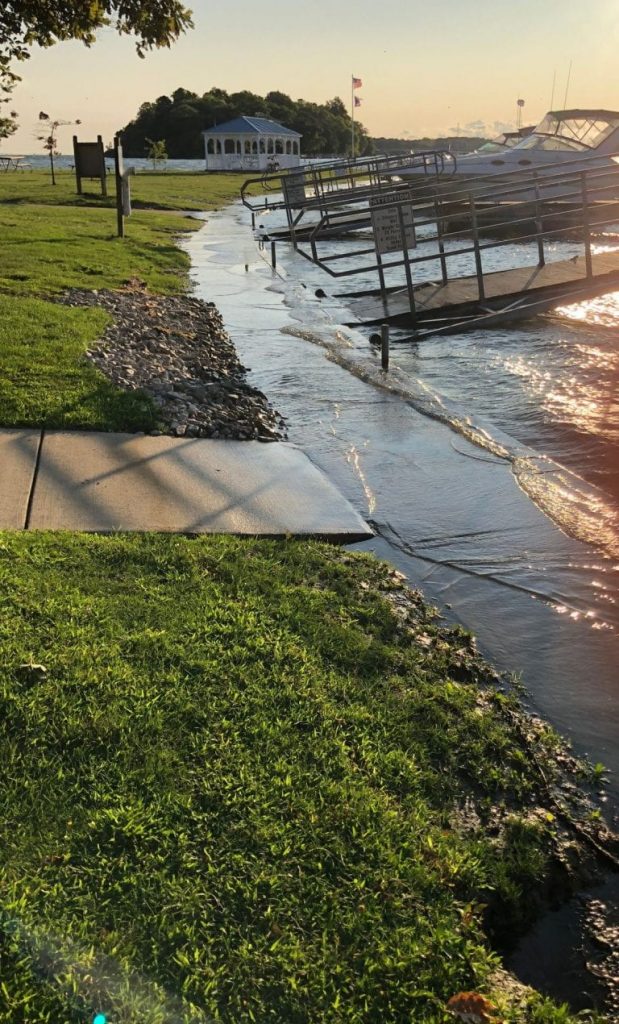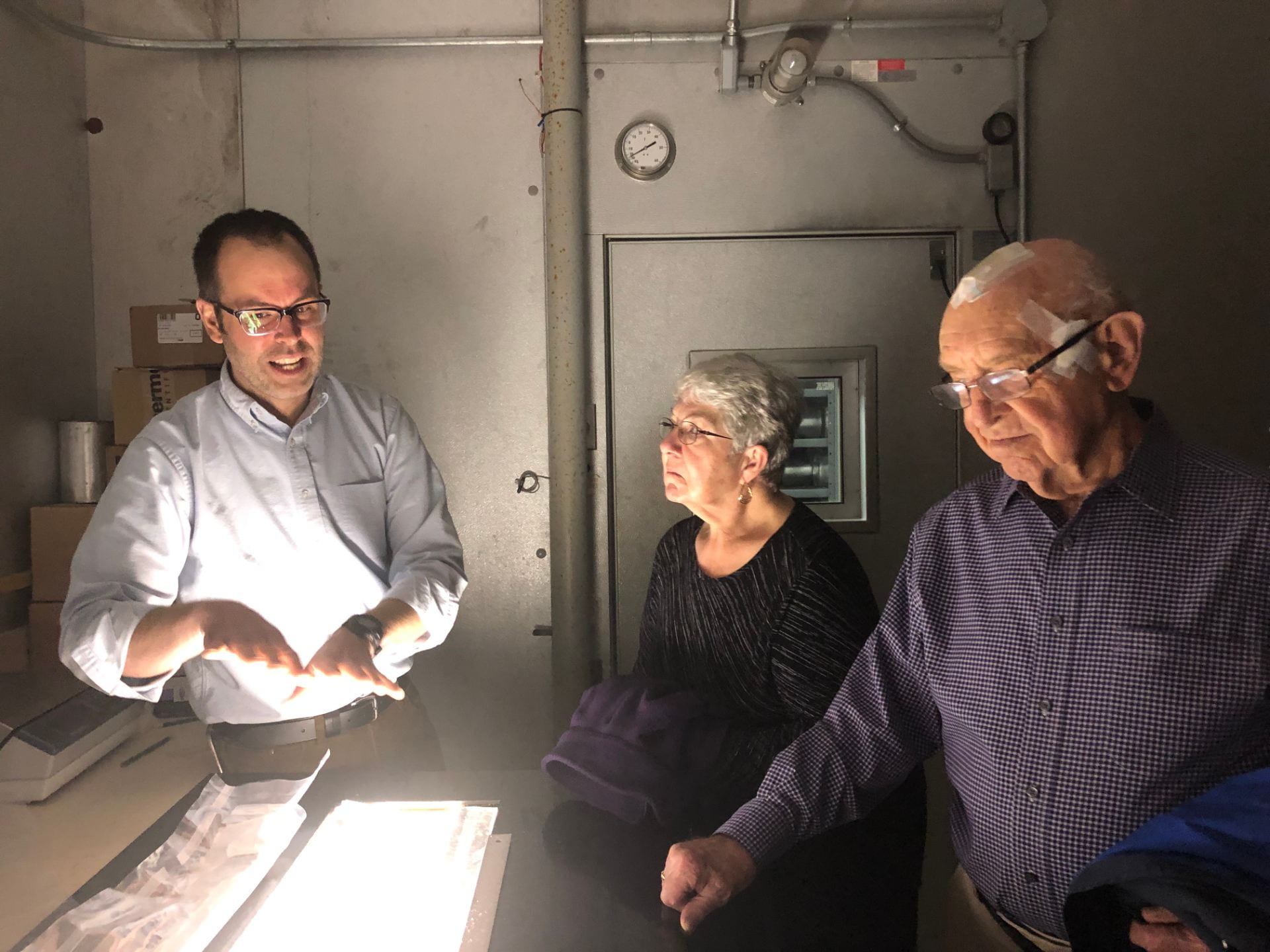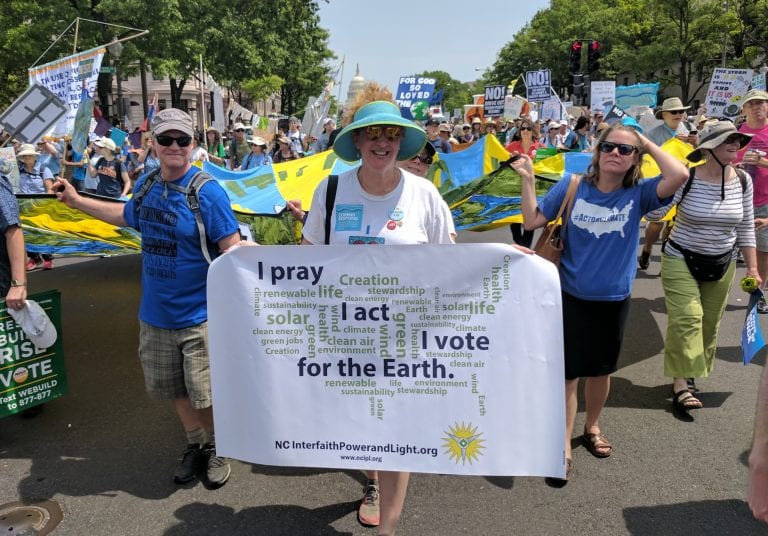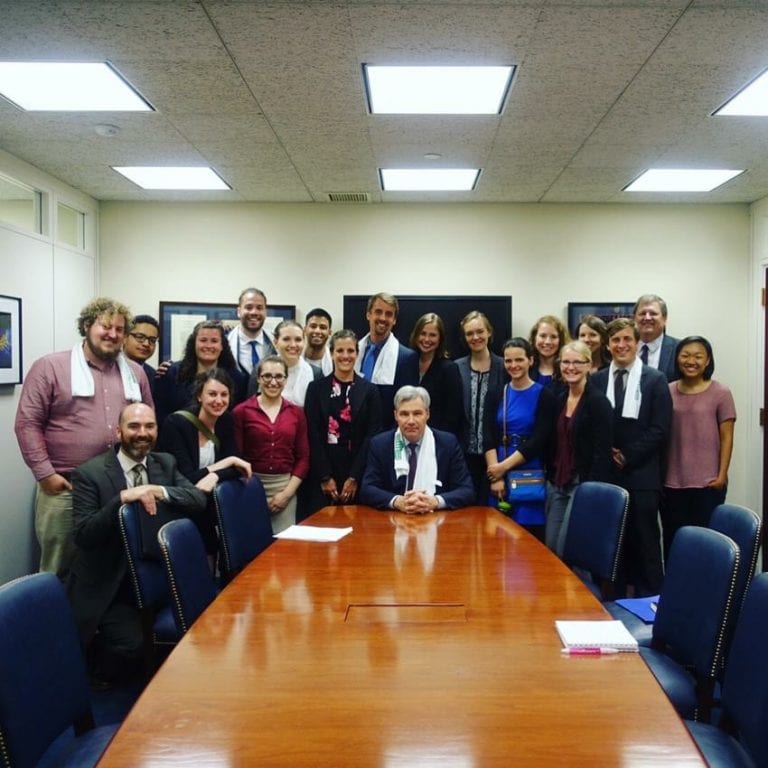Chapter 9: Case Study: Climate Change
9.1 Religion’s Role in the Response to Climate Change

Examining religious climate change perspectives will be helpful as a reminder that the arguments of Lynn White and others have played a role in how religious environmental work has developed, but those theoretical arguments will not continue to be the main focus of our examination of religion and the environment. While it is important to know about the arguments and ideas that have shaped the field, there have been extraordinary developments in how American faith communities engage in environmental education and advocacy. Climate change is one of the best cases to highlight that growth and can provide us with a more informed sense of some of the specific ways that faith-based values interact with environmental issues. The operative question is no longer whether faith communities engage in environmental work (or even whether their impact is negative or positive – it’s mostly positive [1]), but what are the range of ways that faith communities engage in environmental issues like climate change, and how can a deeper understanding of this enrich the collaboration between science, policy, religion, and other partners to enhance planetary flourishing and reduce environmental and social degradations?
In my religion-environment class at Ohio State, I always complement our discussion of climate change with a guest lecture from one of my colleagues at the Byrd Polar and Climate Research Center at Ohio State. Byrd Polar is a world leading center for the study of climate and all things polar (like ice cores and glaciers); Byrd sponsors the State Climate Office of Ohio, headed by State Climatologist Dr. Bryan Mark. An understanding of the basic facts of climate change helps set the table for our attention to this issue, and the faculty and researchers at Byrd are a great source of the latest reliable information about climate change. [2]

Attending to the science behind climate change also engages us in the most common pattern of how faith communities in America, at the denominational and local congregation level, approach environmental issues. A great deal of religion-environment literature, and especially curricula and official statements developed by religious communities, are motivated by and often begin with an overview of what we know about a particular issue or the state of the world (the science) and then proceed to apply their community’s values (eco-theology) to concerns that emerge from a scientific assessment of the situation.
This basic pattern is nicely illustrated by Kathy Dean Moore’s short video on climate change as a moral crisis. [3] Dean Moore makes the point that scientists (and environmental educators and activists) sometimes mistakenly think that the information they provide about environmental problems will suffice to inspire action to solve those problems. The expectation is that telling people “how the world is” (for instance, demonstrating that glaciers are melting and jeopardizing fresh water sources for many nations [4]), will motivate them to take countermeasures. She calls this a logical error.
Instead, what Dean Moore, a philosopher, helps us see, is that information about the world is not sufficient in itself to motivate action. People need to apply a second premise, namely their values, their beliefs about what is important and about how the world should be, before any conclusion about taking action will follow.
This may seem like common sense, though it may often operate in a hidden way. Many of our value judgements happen automatically, seemingly without thinking, on the basis of what we think is true about how we should live.[5] In this way, environmental values complement environmental information (science) to determine what sort of policies and lifestyles we will support. Other barriers like pride, apathy, and greed might still stand in the way of action, but this basic sequence of information being activated by values toward action makes clear where faith-based values play a role.
This can be seen in many general examples, like Steven Bouma-Prediger’s book, For the Beauty of the Earth, an evangelical Christian environmental textbook, which spends the first two chapters providing an overview of global environmental problems and then proceeds to discuss the Christian values that support environmental action in response to those issues. Many of the general environmental policy statements of denominations follow a similar pattern, such as the Evangelical Lutheran Church in America’s social statement on: Caring for Creation: Vision, Hope, and Justice (1993), which frames environmental issues from a faith perspective and describes “the current crisis” from a scientific standpoint before describing a plan of hope and action.[6]

Many faith-based climate statements follow the same pattern, and it is instructive to compare and contrast statements from across a range of traditions. Here are a number of illustrative examples:
- Interfaith Declaration on Climate Change
- Global Climate Change: A Plea for Dialogue, Prudence, and the Common Good (A Statement of the the United States Conference of Catholic Bishops – print version available here)
- Climate Change: An Evangelical Call to Action
- Statement by Israel Orthodox Rabbis on the Climate Crisis; The Rabbinic Letter on Climate; Jewish Community Priorities for Climate and Energy Policy (2008)
- The Time to Act is Now: A Buddhist Declaration on Climate Change[7]
- Islamic Declaration on Global Climate Change
- Orthodox Patriarch Bartholomew Encyclical on the environment, including climate change
These statements are just the tip of the iceberg [8], but they help us see the diversity and consistency of religious concern for climate change. While the impact of these statements varies, they have not escaped the notice of legislators, such as U.S. Senator Sheldon Whitehouse, who delivered a talk titled: Time to Wake Up: Faith Organizations Weigh in on Climate Change from the Senate floor in 2013.

There are a number of ways to analyze religious statements like the ones listed above. First, there are a variety of types of statements to be found. Some denominations regularly create social policy statements about issues of contemporary concern, and many denominational climate change statements fall in this category. Other, similar sorts of denominational statements exist as well, like Overtures in the Presbyterian church, including a recent one aimed at divestment from fossil fuels. [9] There are also statements organized or compiled by coalitions of religious organizations and denominations, like the 2008 Jewish climate and energy policy statement listed above. In other cases, one or more organizations may create a letter or a statement and seek signatures from a range of religious leaders, such as the Rabbinic Letter on Climate Change [10] recorded above. Some statements are intended as commentaries about a particular bioregion, like the Columbia River Pastoral Letter, and others carry a much wider authority, like Pope Francis’s environmental encyclical letter, Laudato Si’ (2015), which we examined in detail in chapter 8 and which makes significant reference to climate change. [11]
Some of these statements are created by denominations as official expressions of their environmental values, others are created during moments of environmental advocacy when various faith communities join together to make statements about a particular contemporary issue; still others have resulted from conferences or reflective gatherings of religious scholars or theologians. [12] These statements therefore carry different types of authority. Most are aspirational. Some focus on ways that individuals can change their behaviors to care for creation, while others aim to influence policy at broader levels. Even in the case of official denominational social policy statements, which are usually ratified at an annual meeting of a particular denomination, rank and file members of those denominations may not even know that these statements exist. Most statements are not intended to obligate all members to particular views and actions. Instead, they often serve as resource documents for adult study groups or as justifications for policies or actions taken by local congregations. [13] For instance, in the mid-2000s there was a national United Methodist Church resolution that called for all Methodist buildings to be models of energy efficiency (and to undergo energy audits toward that end) as a response to climate change. [14] Because of this resolution, many local United Methodist conferences passed their own similar resolutions, like the West Ohio Conference of the United Methodist Church, which passed a resolution calling on their 1000+ congregations to undertake energy audits and steward their energy resources wisely. The UMC Book of Resolutions from 2016 makes a nice study, as it begins with resolutions about the natural world, including energy policy.
Resolutions like these are intended to guide and inspire local congregational behavior and vision, but it remains up to local congregations to determine what issues they will focus on at any given time. By contrast, in a more hierarchical tradition like Roman Catholicism, a papal encyclical like Laudato Si’ is intended to provide an authoritative overview of a social position that local Bishops and priests are expected to support; though here too, local autonomy allows local religious leaders to vary in the emphasis they might place on particular issues and teachings.
- Later we will take up the question of the extent to which special interest groups or politicians attempt to use religion to motivate or justify their agendas, recognizing that both pro- and anti-environmental groups might do so; this is relevant to the question of how religion influences the environment, but I would just note that faith communities themselves would probably like to be freed of such manipulative influences. ↵
- Dr. Ellen Mosley-Thompson maintains a one-page online document listing reliable sources of climate science, which can be found here. ↵
- http://changingclimates.colostate.edu/movies/kathy_moore_796_kbits_150k.html ↵
- Ohio State’s Lonnie Thompson was a contributing author to a glacier melt report of the Pontifical Academy of Sciences: http://www.casinapioiv.va/content/accademia/en/events/2011/glaciers.html ↵
- This resonates with the aesthetic view of ethics highlighted in chapter 6, particularly in reference to the thought of Iris Murdoch, who believed that our vision of how the world is naturally shapes most of our ethical views. ↵
- In addition to the denominational policy statements available at the links above, the Forum on Religion and Ecology at Yale maintains a list of various religious environmental statements: here and here ↵
- The most recent use of this statement was to support COP21 in Paris in 2015: http://gbccc.org/ ↵
- Some additional statements of interest include: National Climate Ethics Campaign: Statement of Our Nation's Moral Obligation to Address Climate Change; Muslim Green Guide to Reducing Climate Change; Islamic Faith Statement on Islam and Ecology; Hindu Declaration on Climate Change; A Sikh Response to Global Warming and Climate Change ↵
- https://www.fossilfreepcusa.org/overtures/overture-2018/ ↵
- This letter also reflects the liberal/progressive political views of its sponsoring organization. ↵
- Laudato Si’ has also generated significant inter-religious dialogue about climate change: https://u.osu.edu/religionandenvironment/2015/11/09/laudato-si-adds-catholic-voice-to-diverse-spectrum-of-religious-creation-care-views/; some notable quotes are highlighted by Interfaith Power and Light here. ↵
- For example: http://www.webofcreation.org/religious-education/545-au-sable ↵
- A religious statement that claims to obligate adherents to a particular behavior runs the risk of rendering that behavior morally shallow - if one behaves in a certain way only because they are told they must, are they really acting with much moral depth? This relates to Pope Francis’ preference for the term “care” in Laudato Si’, as discussed in chapter 8, since a heartfelt response may be more genuine and enduring than one generated by a (potentially detached) sense of duty. ↵
- http://www.umc.org/topics/topic-united-methodists-care-for-creation ↵
